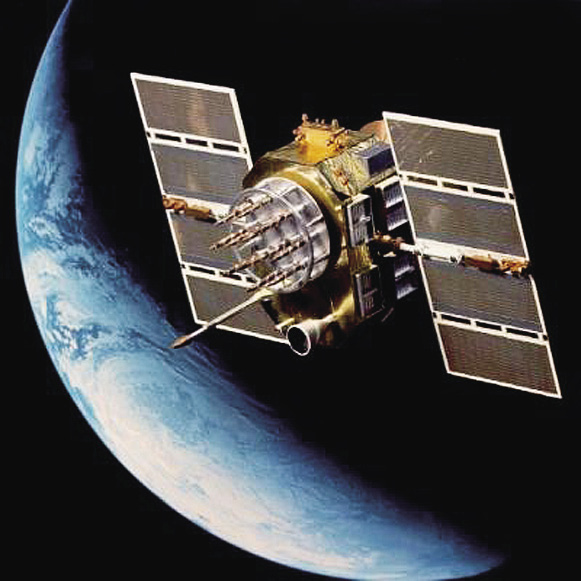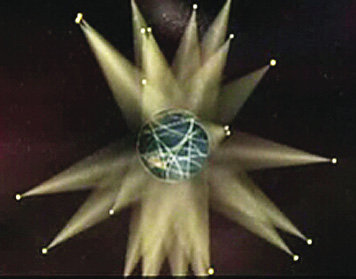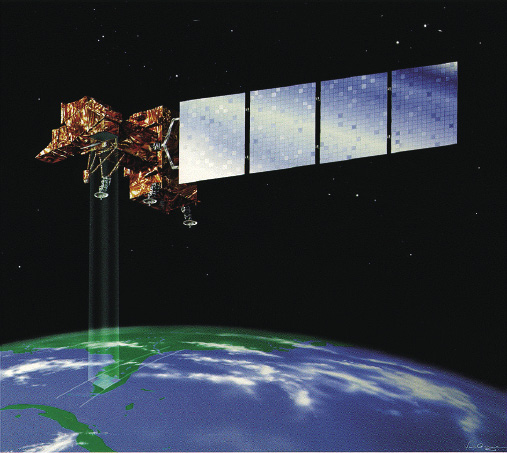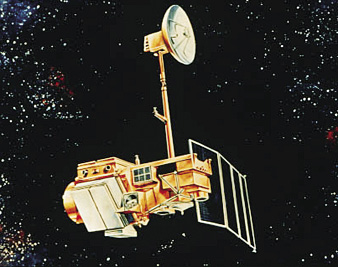Some farmers believe that site-specific farming is prohibitively expensive and that costs cannot be justified in dryland fields for grain crops. Studies conducted at NDSU and in the region have shown low-cost site-specific tools that yield beneficial results are available.
To conduct site-specific farming, a producer must be able to do three things:
- Know where you are
- Gather information at that location
- Do something about it
Knowing where you are
GPS (global positioning satellite) receivers are becoming so common that they are a part of everyday life for many Americans. Hunters and fishermen use GPS receivers. GPS receivers are in rental cars, in our own cars, in cell phones, wrist watches and golf carts. The GPS signal is part of the “peace dividend” from the end of the Cold War. The U.S. Department of Defense has a system of satellites in geosynchronous orbit around the Earth that transmits signals to any receiver designed to analyze the signal. Combined with a very accurate time measurement within the satellite, the receiver on Earth can determine its location within an inch to several feet, depending on the processing capability of the receiver.
Because of slight errors caused by atmospheric conditions, a GPS-only satellite receiver can err a few feet to many feet. A GPS receiver that can receive a “differential GPS” (DGPS) signal can correct for these errors.
Some DGPS signals are free and some require a subscription. One free signal in the region is the WAAS (wide-angle augmentation system) differential. The WAAS signal is provided by the Federal Aviation Administration to support air traffic, but receivers are available that take advantage of that correction signal. Commercial GPS providers also have access to subscription DGPS signals from private satellite companies that also provide DGPS services.
For extremely accurate GPS, especially for elevation (all GPS provides elevation estimates, but the error vertically is typically three times horizontal error), RTK (real-time kinetics) GPS is available. The RTK system requires either a base station or a subscription to a company that has base tower signals available. The Rural Tower Network in the Red River Valley is an example of a private consortium of companies that have built a network of RTK towers with RTK correction signals available to people who subscribe to the service. RTK allows subinch horizontal and elevation measurements and supports activities such as auto-steer, strip till, drainage activities and accurate elevation mapping.
Global Positioning Satellite system satellite array around Earth.
Gathering information
Information about locations within fields can be gathered by using sensors or by sampling. Use of sensors is by far the easiest method, but sometimes information on certain inputs, such as crop nutrient requirements, is best determined with sampling. Sensors that are commercially available include:
- yield monitors
- soil electrical conductivity or electro-magnetic sensors
- remote imagery, including satellite images, aerial photography and hand-held active sensors
- soil compaction sensors
- on-the-go soil pH (alkalinity or acidity) sensors
Electrical conductivity soil sensor.
Electro-magnetic soil sensor.
Yield monitors (see “Yield Mapping,” NDSU publication SF-1176-3) collect yield and moisture data while the harvester is operating. After the data is cleaned (outliers removed and GPS inaccuracies corrected), a map can be developed to show areas of productivity. Yield monitors for site-specific purposes always should be connected to a DGPS receiver.
Soil electrical conductivity (EC) sensors or electro-magnetic (EM) sensors have been used to map a combination of soil properties. The sensors are sensitive to soil organic matter, clay, moisture and soluble salts. In this region, the resulting measurements are a combination of all of those properties. The patterns have been useful in directing zone soil sampling and also in pinpointing high-salt areas.
Remote sensing is the most common sensor used in the region for managing crops. Landsat 5/7 satellites provide multispectrum images at a resolution of about 100 feet. This sounds like the images would be very coarse; however, many important soil features are often larger than one-half acre, so the resolution works well for these larger features. The normalized differential vegetative index (NDVI) bands have worked well to identify important soil and nutrient availability features in growing crops.
Landsat 7 satellite.
Landsat 5 satellite.
Choosing a growing-season time window to obtain a satellite image when the crop is filling in the rows, but has not yet flowered, is often important to obtain a meaningful image. With most satellites, given the budget that growers have, picking a specific date is not possible. The satellites typically pass over an area only every several days. If clouds obstruct the view during that time, a grower will need to wait until the next pass. For many management uses, an archived image that is several years old may be as meaningful as a current-year image.
Aerial photography produces images that are much more detailed in resolution than Landsat images; however, finding a pilot willing to take the pictures at the right time may be difficult. For fields up to 80 acres, flying at about 5,000 feet above the surface and taking the photo straight down (nadir) is a good method. Cloud cover, especially broken cloud cover, will confound the best intentioned aerial crop photo.
Hand-held active optical sensors are available and can be attached to a farm implement when another field operation is being made. These sensors produce an image at a much finer resolution than most satellites at a time in the season that is important to the producer. These sensors emit their own light, and the light registered by the sensor on reflection is the light reflection from the sensor. All other ambient light is excluded. This makes the sensor readings the same regardless of time of day, or whether the sky is cloudy or not.
The power of these active sensors is its ability to delineate areas of a field that are more or less productive at a fine scale at a time of the user’s choosing. This information can be used directly in formulas for inputs for which rates or use are related to crop productivity or soil properties related to the sensor readings. The delineations created by these tools can be used by themselves or with other data files to direct sampling for soil or plants.
Zone soil sampling is based on the concept that residual crop nutrients are in patterns for some logical, predictable reason. Years of research in the region have shown that zone soil sampling for residual nitrate is much more economical and meaningful than any reasonably obtained grid soil sampling. Data that has been shown to be useful in zone sampling include topography (landscape from elevation data), soil EC, yield frequency maps and remote imagery (See “Soil Sampling and Variable-Rate Fertilizer Application,” NDSU publication SF-1176-2). In most studies, two to six zones per field were as meaningful as 36 grid samples in the same field. Zone sampling is very economical, and the patterns it produces usually represent the patterns of residual soil nitrate in the region.
RTK (real-time kinetic) GPS base tower.








